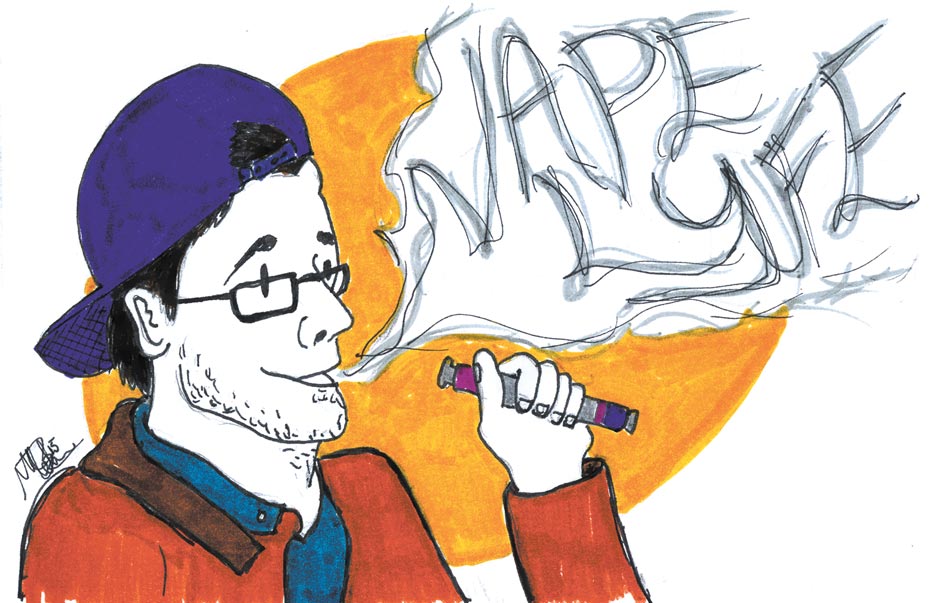
Vaping: at least it’s better than smoking
By Ashley Gray, January 8 2014 —
E-cigarettes might be a healthier alternative to a pack of smokes, but students at the University of Calgary won’t have a chance to use them.
The U of C banned e-cigarettes — also known as vaping — in November. These devices are the latest way for former smokers to get their nicotine fix.
E-cigarettes are flameless electronic cigarettes that vaporize e-juice, a liquid solution that includes nicotine, glycerine and flavourings, instead of tobacco. Quality ranges from all-in-one convenience store versions that cost about $10 to kits featuring refillable liquid tanks, e-juice and batteries, which can cost hundreds.
The 1950s glamour of smoking is gone. We all sat through presentations in high school that featured X-rays of blackened lungs and an old man smoking through a hole in his neck. But if littered cigarette butts on campus are any indication, students are still smoking.
The anti-smoking message continues at the U of C. The “Break It Off” tour, a national anti-smoking campaign that encourages students to “break up” with their cigarettes, had trucks parked outside MacHall during the Fall semester. It was only a few weeks after these trucks left that the U of C banned e-cigarettes on campus.
But a nicotine inhaler, which is an e-cigarette without the splashy branding, is one of the quitting aids suggested by both this tour and conventional medical advice. E-cigarettes mimic the motion of smoking, which helps addicts satisfy the physical movements of smoking cigarettes.
It’s hypocritical of the U of C to preach against smoking while banning students from using an effective quitting aid. E-cigarettes might be inconvenient, but they’re still helping smokers quit. If we’re banning e-cigarettes, we might as well ban nicotine patches, gum and lozenges as well.
It’s clear that the university is more interested in appearing like a healthy campus than they are with helping students quit smoking.
The biggest concern with vaping is the annoyance to others. It’s hard to concentrate when a large cloud of earl-grey-flavoured smoke hangs over the room. But annoyance isn’t a good enough reason to ban students from doing something that could help save their lives.
E-cigarettes are experiencing a surge in popularity because they contain fewer toxins than their cancer-causing counterparts. Some e-juices don’t even contain nicotine. Many smokers try to quit using vapourizers in place of cigarettes to wean themselves off nicotine.
Health Canada is currently studying the effects of vaping. The results aren’t in, but e-cigarettes lack the toxic secondary smoke from a conventional cigarette.
The U of C is making it harder for smokers to break their addiction by forcing students trying to quit to vape in the same area as their cigarette-puffing peers. The likelihood of someone quitting while surrounded by people still smoking is unlikely. Vapers are also forced to breathe in the second-hand smoke that they’re trying to avoid.
According to the U of C Wellness Centre, most of the smoke from a cigarette isn’t inhaled by the smoker, making second-hand smoke the second-leading cause of lung cancer. The ban pushes students into situations that are dangerous to their health.
Most university students are adults. We can vote, consume alcohol, and purchase cigarettes. E-cigarettes and vape-kits are available only to the over-18 crowd.
University administration doesn’t hold the hands of drunk students at Thursden. They shouldn’t be forcing unnecessary restrictions on students who want to vape.
The university wants to ban e-cigarettes so the campus looks healthier. If the U of C is interested in making changes to help student health instead of showy moves, they should lift the ban on e-cigarettes.
